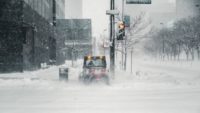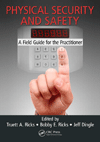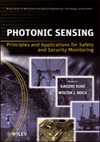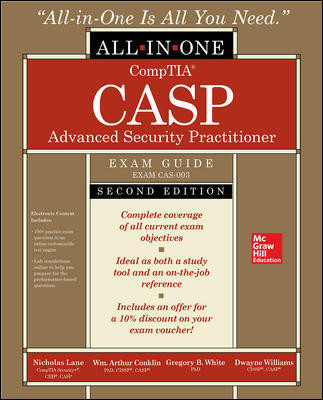Prepare for seasonal weather emergencies and reduce risk

Image via Unsplash
In 2023, there has been unprecedented extreme weather from heat waves across the globe to wildfires burning millions of acres in Canada to flooding in Northeastern United States. Natural disasters and extreme weather are inevitable, but how security leaders prepare and respond to them is the key to keeping an organization’s employees and assets safe. Every organization should at least have general safety procedures and an emergency response plan in place for natural disaster emergencies.
Creating incident management teams
Building general safety procedures and emergency response plans can seem like a hefty task, so assigning employees to incident management teams is highly recommended. The team approach to plan creation allows for multiple perspectives of safety, especially if there are employees that work in varying environments. More people on the floor with direct knowledge of response plans and procedures can increase follow-through during and after an emergency event.
Such plans and procedures should account for employee and asset safety and business needs. This may include having contingency plans for staffing in the event employees cannot work due to weather conditions, such as transferring operations to other facilities temporarily.
Seasonal safety meetings
A great method of educating employees about plans and procedures for personal and facility safety is to host seasonal meetings, walk-throughs and/or drills. Continuous education of procedures yields better follow-through and mitigates risk.
These seasonal meetings are also a great time to collect and update employee information so that human resources always has the correct contact and emergency information on-hand. It is pertinent to have both physical and electronic copies of important employee and facility information so that it is accessible in an emergency. The meetings are also important to highlight the challenges of each season, whether it be winter hazards or heat extremes during the summer.
With each new season, comes a new set of possible emergencies.
Winter
Winter hazards can include snow, ice and temperature extremes, primarily when employees work outside or on the road. After reviewing plans and procedures with all employees, the next step is to ensure all assets are winter weather enabled. This includes preparing vehicles for colder temperatures with snowshoes and new windshield wipers. Facilities in areas with more extreme weather should also check that salt is available or on-site to avoid icy walkways and parking areas. If employees work outside during the colder seasons, check that all have proper attire for the elements.
Spring
Spring weather can bring heavy thunderstorms, lightning, rainfall, flooding and even tornados. To prepare for storm risks, ensure employees understand storm procedures and response plans and can locate storm shelters. This is also a great time to initiate tornado drills or walk-throughs, so every employee understands what to do. Heavy rainfall and hail can significantly produce risks to building roofs if they have been compromised due to winter weather; scheduled checks are recommended at the beginning of spring. If assets are in flood-prone areas, verify that flood mitigation tools are available, including sandbags, gates and other barriers. Review lightning and rainfall thresholds with the appropriate team so everyone is on the same page about when actions must be taken to ensure safety.
Summer
Summer weather risks can vary depending on location but can include a mix of tropical storms, flooding, thunderstorms, lightning, tornados and the added temperature factor. This year there have been record-setting heat waves worldwide, illustrating the essential need to educate employees on heat safety. All employees should understand the dangers of heat stress on the body, and team leaders should follow procedures to ensure all employees are safe while working in hot conditions. There must be an emphasis on heat risks with employees who wear protective clothing (PPE), and special precautions must be taken. Confirm an adequate water supply on-site and readily available for all employees and plan for employee breaks during shifts to reduce any heat-related incidents.
The incident management team can also take this time to assess the heat thresholds in place. Most hospitalizations for heat-related incidents have occurred outside of heat advisories, so it is advised to make heat-related safety decisions based on the Wet Bulb Globe Temperature instead of relying on Heat Index. Reviewing all thunderstorm and spring hazard protocols is also recommended to increase awareness. Employees should become familiar with hurricane and other tropical event protocols, and hurricane drills should be implemented if any facilities are in areas that could be affected. Verify that all assets are prepared to withstand rain, wind and heat extremes.
Fall
The fall season brings a mix of all other season advisories, and it is recommended to continue to review procedures and thresholds. Heat and tropical events are still a factor in fall weather, especially in the southern United States. In the northern states, fall can be used to prepare for winter hazards and ensure all inventory has been ordered and is on-site.
Executing response plans and procedures
While preparation is one part of mitigating risk during an extreme weather event, how an organization follows its procedures during an emergency is even more critical. The first action is to activate the incident management team and execute the proper emergency response plan and strategies. It is important to stress to the incident management team and all employees the necessity of following all techniques and procedures thoroughly and correctly. The more efficient the organization is in completing procedure tasks, the safer it is for all employees and assets, and the quicker regular business can resume.
Preparation and efficient action are the keys to mitigating an organization’s risk during weather events. Take the practices and examples discussed to build comprehensive response plans and procedures. Create a diverse incident management team and challenge them to view safety from all angles of the organization. Use the seasonal safety meetings to educate employees, answer questions, take feedback and adjust procedures if needed. Personal and facility safety can only be made possible if the organization works together to ensure it.
Looking for a reprint of this article?
From high-res PDFs to custom plaques, order your copy today!



.jpg?height=200&t=1683955002&width=200)




